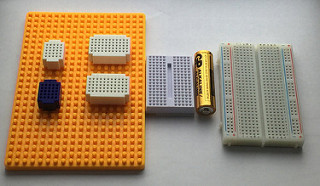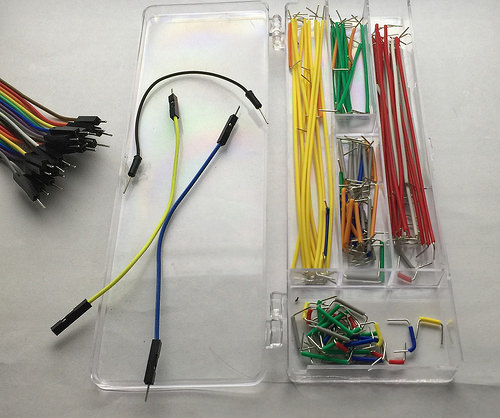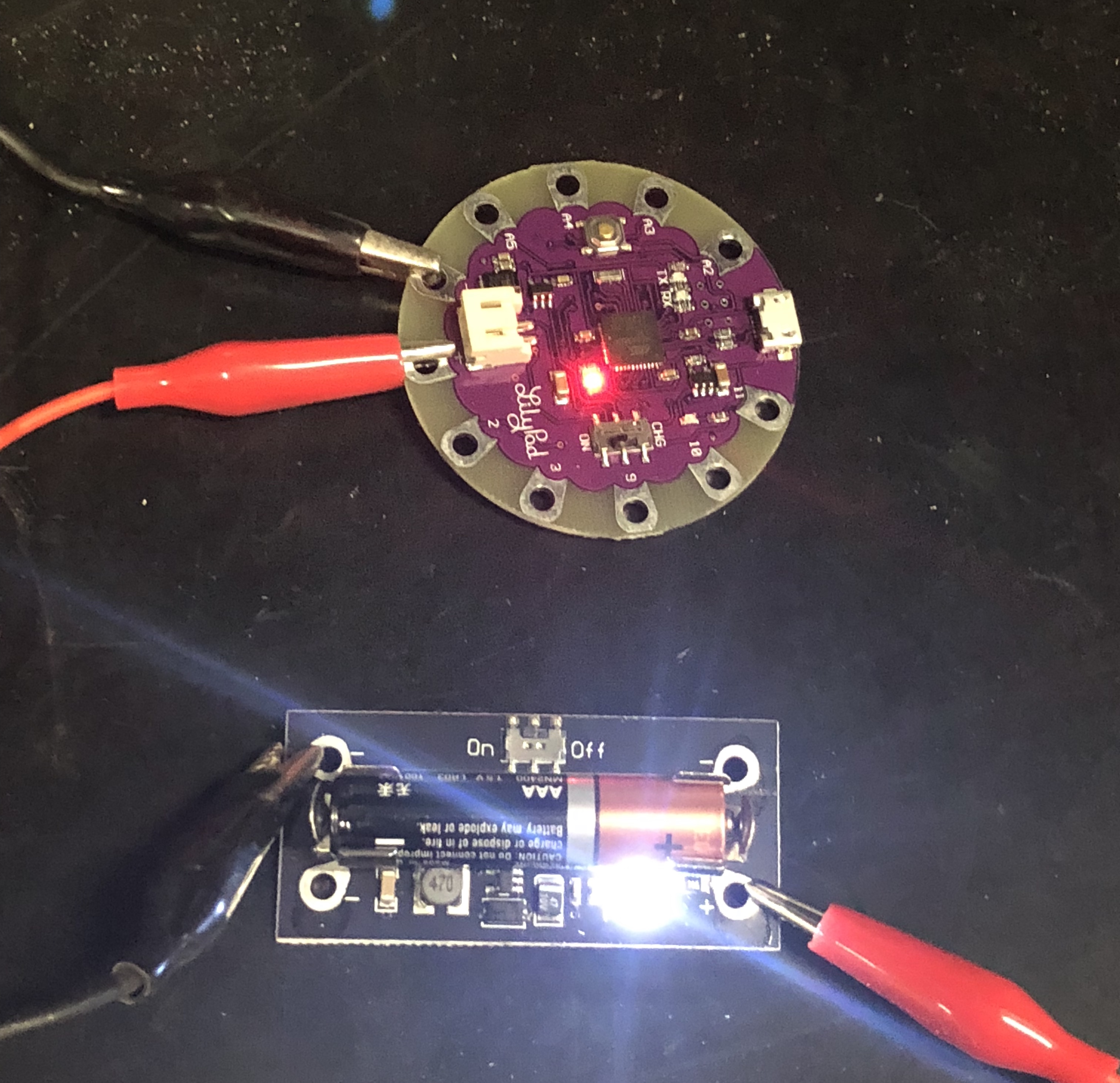Joining
Commercial electronic devices are made of components joined together using solder, which is an alloy of various metals that has the particular quality of melting at a relatively low temperature (around 200 degrees Celsius). (Don’t panic, you will not need to do this.) In soldered circuits, components are placed in contact with other components, wires, or flat panel “circuit boards”, and then joined permanently by flowing molten solder onto each electrical connection using a hand-held soldering iron or more complex tools. Once the molten solder cools and solidifies, components are permanently joined.
The prospect of using molten metal to construct circuits is a bit daunting for beginners, so the good news is you can get a very long way indeed without needing to do any soldering. The projects I teach can be built without any use of a soldering-iron. Soldering is an inexpensive, compact and robust way to permanently connect components, and should be considered once you have your design perfected and want to make lots of a particular circuit, but to start out we will use other techniques. The trade-off is that the things we make will be a little bit larger, and more delicate (they might come apart if you drop them).
To make relatively reliable but inexpensive projects, we can use these tools:
- Solder-less breadboards.
- These boards have rows of spring-loaded sockets that are connected together electrically. A wire placed in a socket will be connected to the other sockets in the same row.
- Alligator leads
- These spring clips are too bulky for permanent use, but can be very handy for trying out an idea to ensure that it works before moving on to more secure connections.
- Jumper-wires
- We’ll use inexpensive pre-cut lengths of wire fitted at each end with either metal pins suitable for plugging into breadboards, or with sockets suitable for accepting pins. You can even cut your own jumpers from a roll if you use the right kind of wire.
- Peripheral modules
- We will interface our compute module to various kinds of Peripheral Input/Output (IO) modules, beginning with a starter kit of handy modules

Above: various types of solderless breadboards, the smallest are repositionable on a Lego-like baseboard. Each socket is electrically connected to the other four sockets in the same row of five.

Above: Jumper wires for inter-connecting non-adjacent sockets, and for connecting to off-board modules

Above: Alligator leads used for a temporary connection
Imagine the most cliched 1960s computer (as seen in old movies) that you can, the above techniques of modules and interconnecting wires are exactly the technologies that began the computer revolution. To recap, we will have a compute module, installed on a breadboard, and connected by jumper-wires to peripheral modules which might be on the same breadboard, on an adjacent board, or mounted on a panel.

Above: A 1960s computer from IBM, showing how early computers used modules wired together.